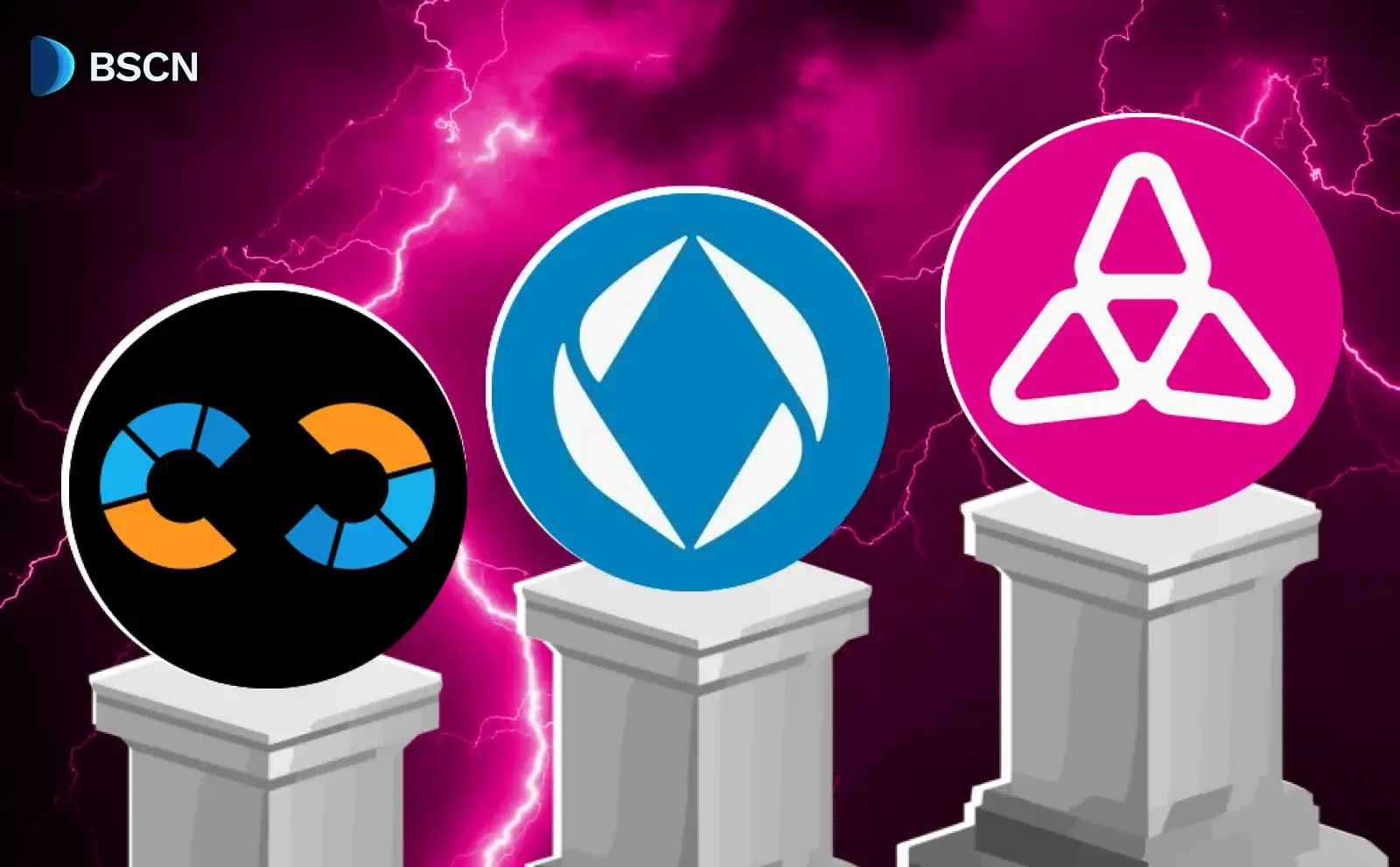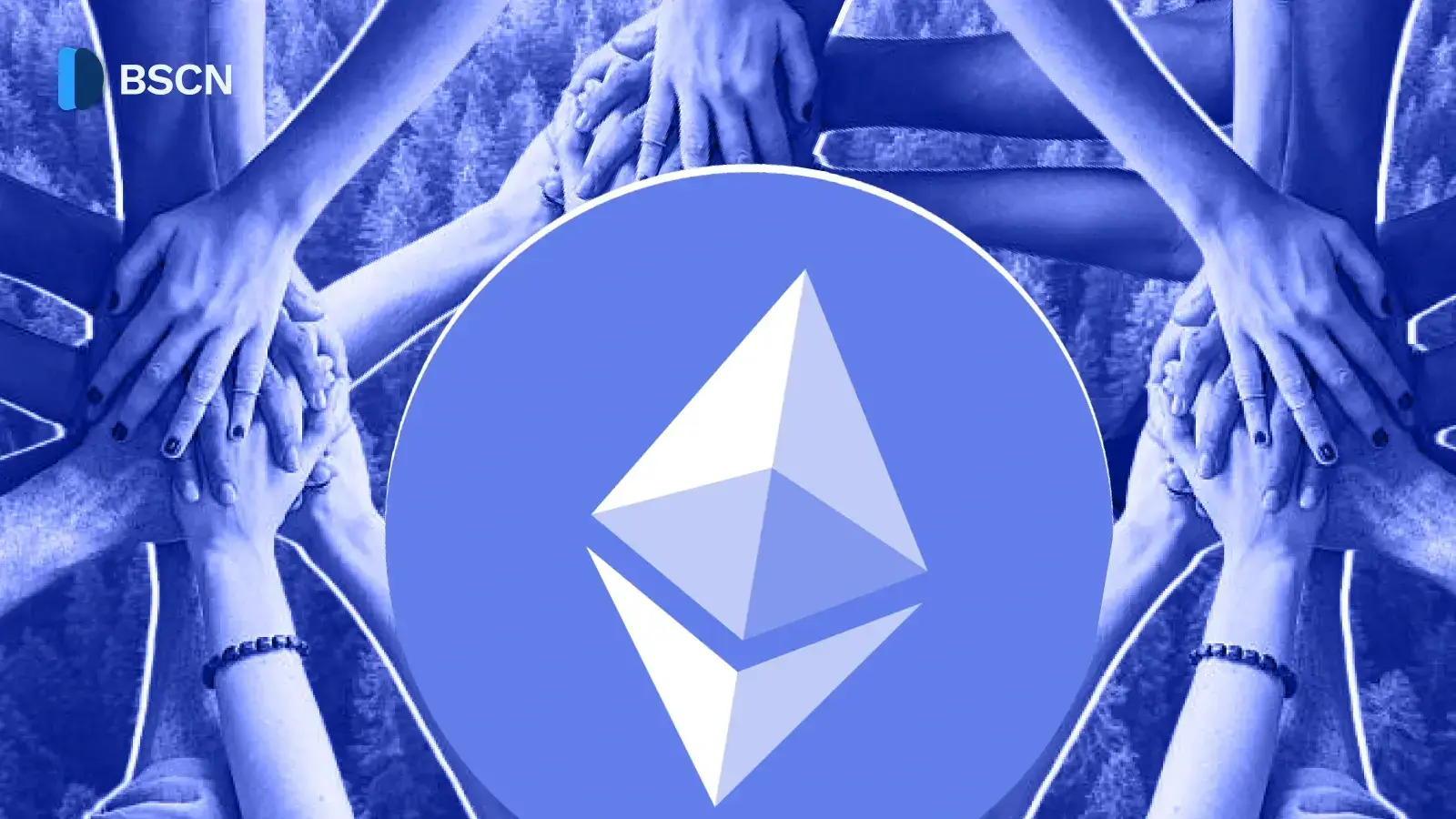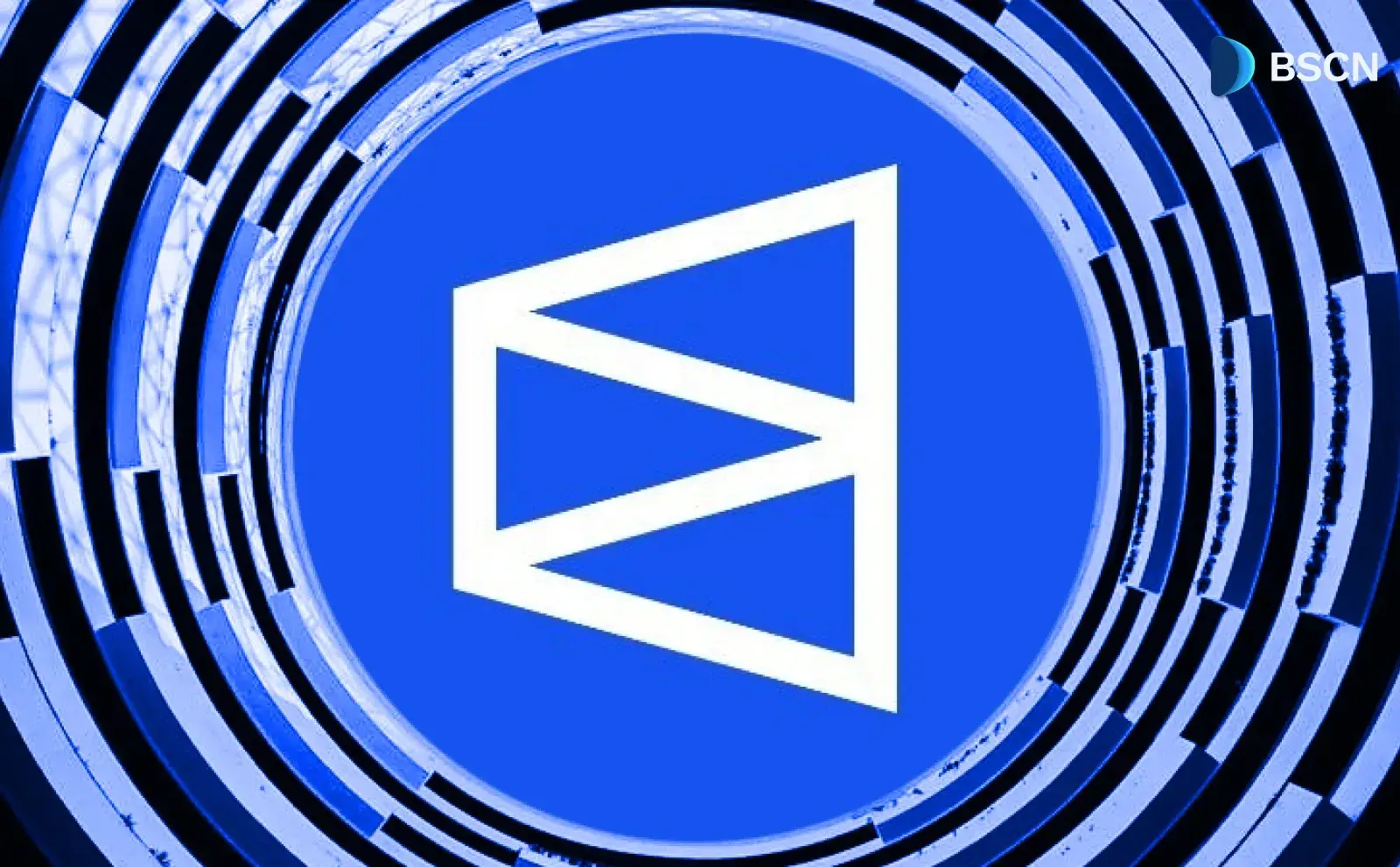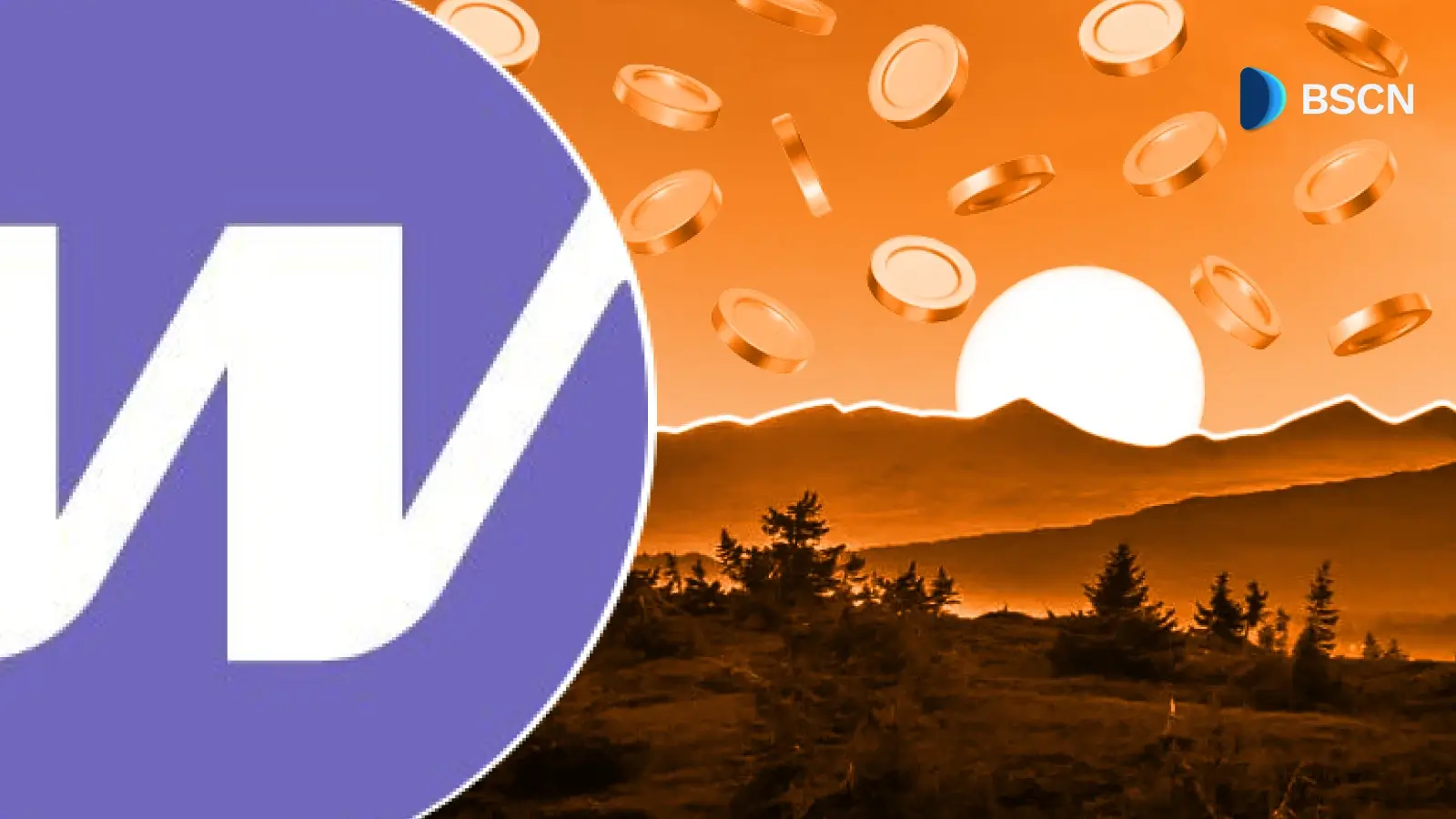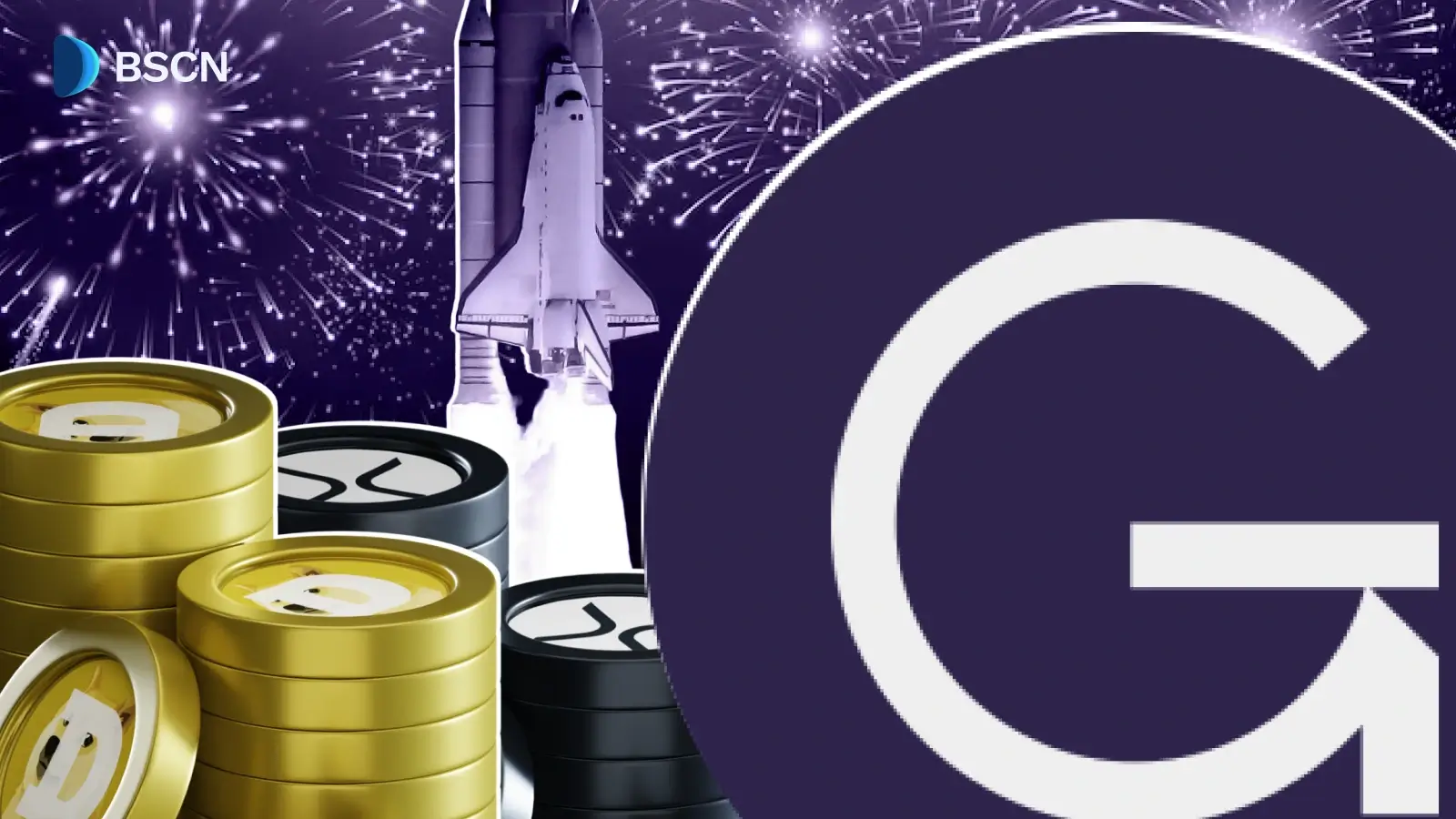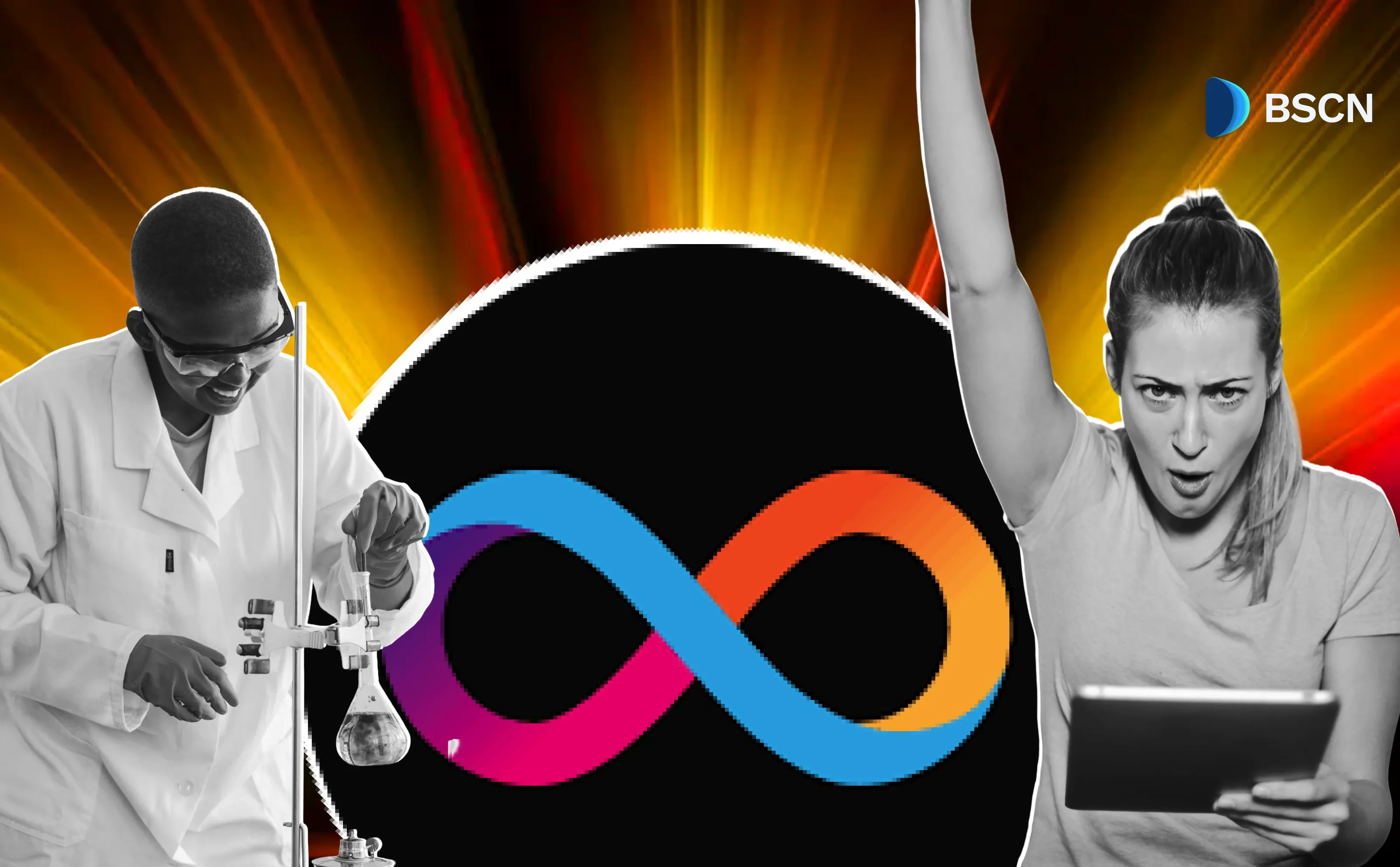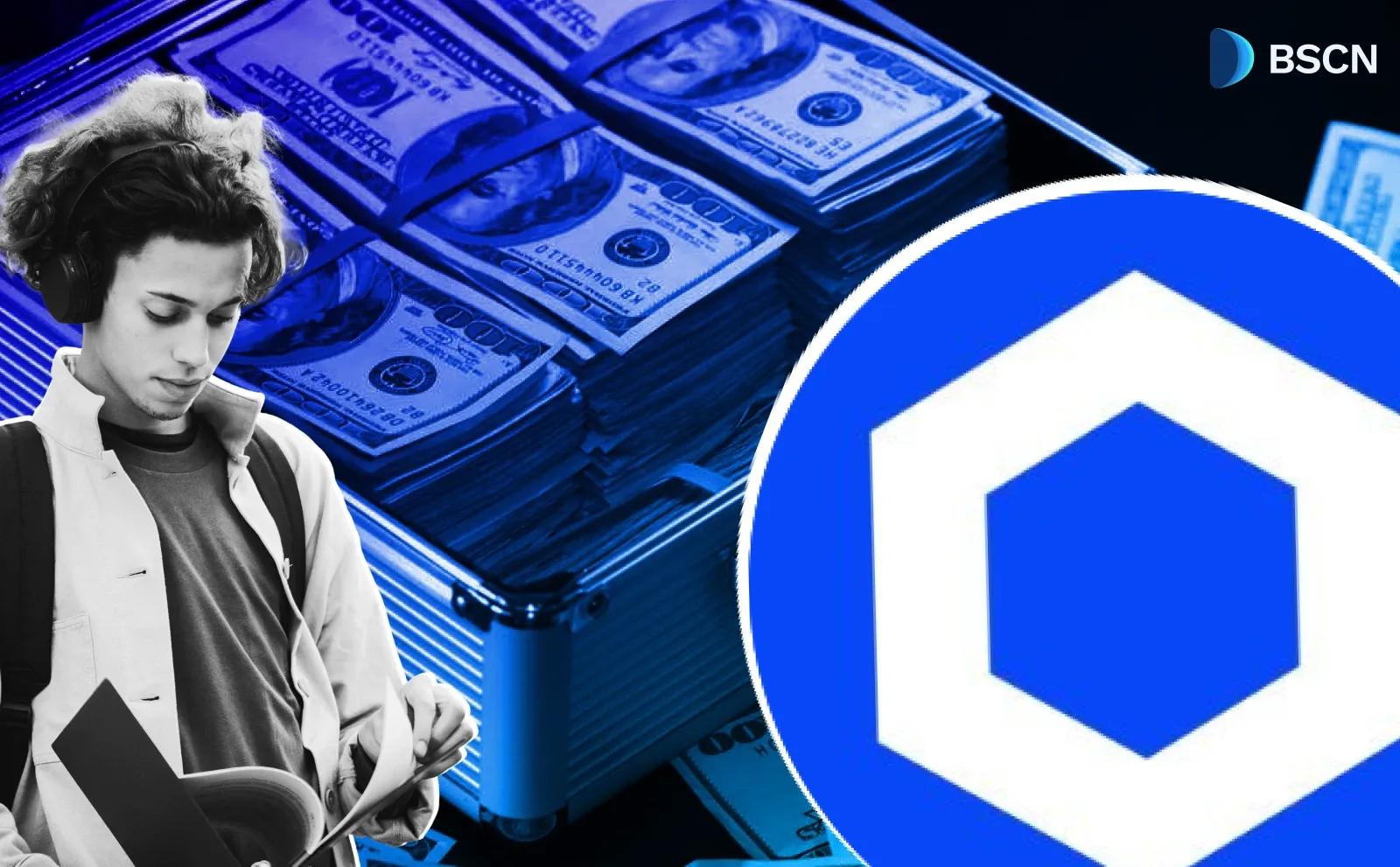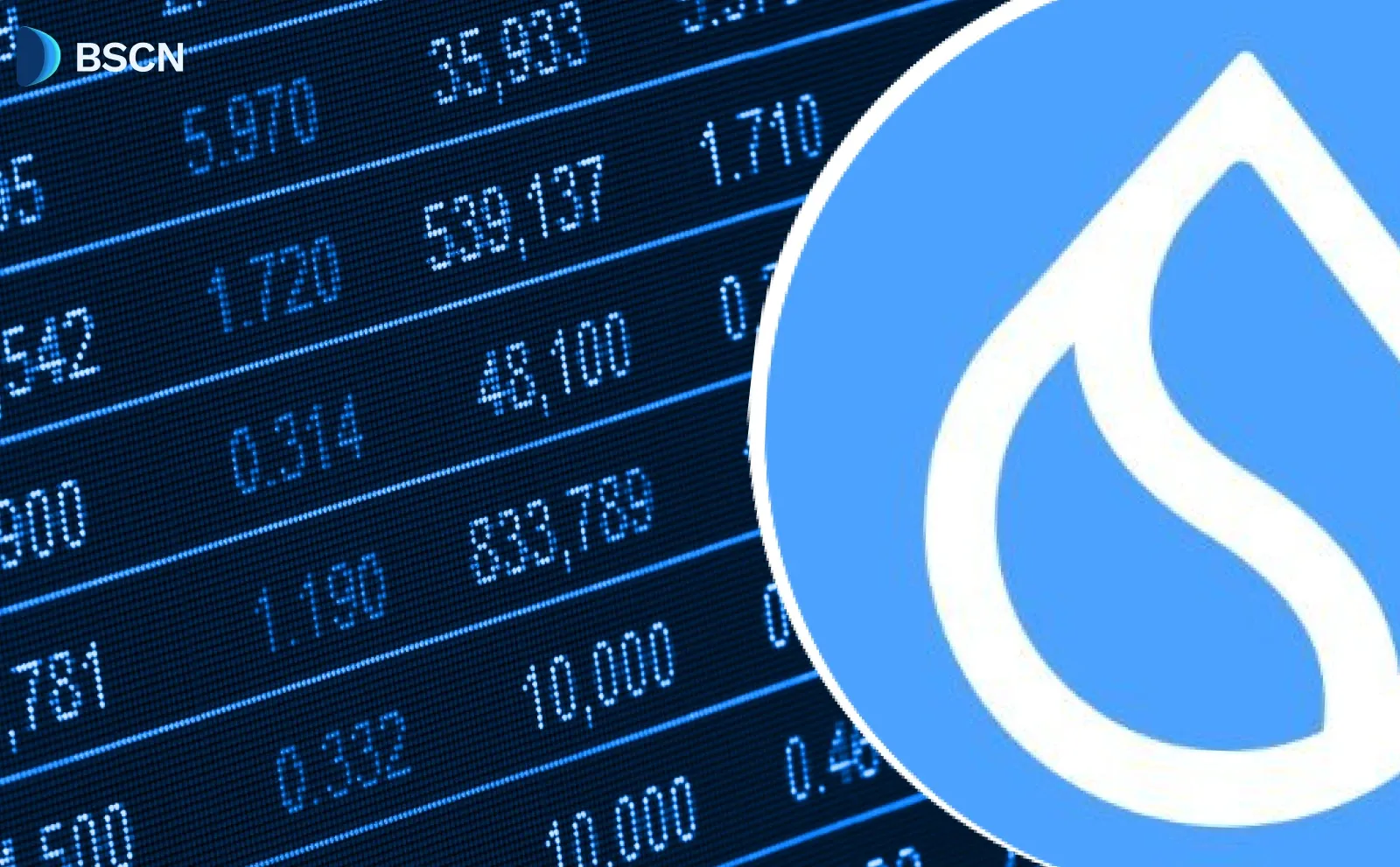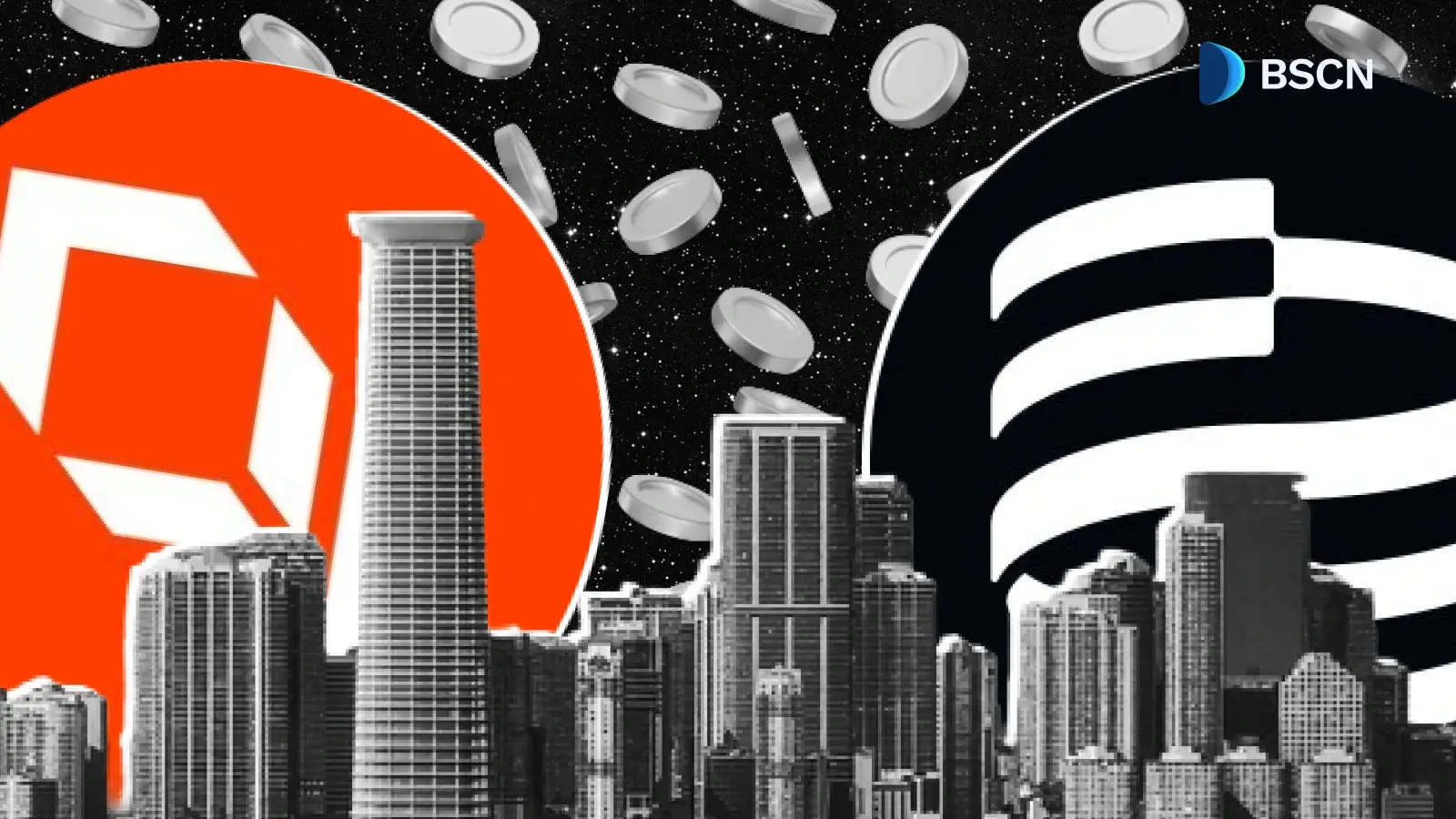Deepdive
(Advertisement)
Monad: The Layer1 Blockchain Engineered for Speed and Compatibility

Monad introduces a high-speed, Ethereum-compatible Layer-1 blockchain focused on scalability, efficiency, and developer accessibility.
Miracle Nwokwu
October 9, 2025
(Advertisement)
Table of Contents
As blockchain technology continues to mature, projects like Monad are stepping forward with ambitious solutions to longstanding challenges in scalability and efficiency. Monad has confirmed that its mainnet launch, token generation event (TGE), and associated airdrop will occur in 2025, marking a significant step for this Ethereum-compatible Layer-1 network.
The testnet, which went live in February 2025, has been a hub of activity, allowing developers and users to experiment in a controlled environment. Key milestones include a major upgrade in August 2025 that reduced block times to 400 milliseconds and introduced the MonadBFT consensus mechanism, alongside ongoing ecosystem initiatives like the Monad Momentum program. A recent post from the project on X showed the "airdrop claim loading" at 98%, hinting at how near these developments might be. While details on exact timing remain under wraps, these updates suggest Monad is methodically building toward a robust rollout.
What is Monad?
Monad operates as a Layer-1 blockchain that prioritizes high performance while maintaining full compatibility with Ethereum's ecosystem. At its foundation, Monad aims to handle up to 10,000 transactions per second (TPS), a figure that addresses the throughput limitations often seen in other networks. This capability stems from optimizations across multiple components, including consensus, execution, and data management, all while ensuring the network remains decentralized.
Unlike some alternatives that sacrifice compatibility for speed, Monad supports Ethereum Virtual Machine (EVM) bytecode directly. That means developers can deploy existing smart contracts without modifications, and users interact via familiar Ethereum RPC APIs. The project emphasizes that these enhancements push the boundaries of what's possible in decentralized systems, enabling applications to scale without relying on Layer-2 solutions or compromising on security. For instance, Monad's design allows for larger contract sizes—up to 128 KB compared to Ethereum's 24.5 KB—opening doors for more complex applications.
The project's origins trace back to years of engineering work, with the devnet launching in March 2024 to demonstrate early benchmarks. By February 2025, the public testnet arrived, starting with 57 validators and a gas limit supporting around 300 million gas per second, with plans to ramp up to 1 billion by mainnet. These steps reflect a deliberate progression, where internal testing paved the way for broader community involvement. Monad's focus on commodity hardware further underscores its commitment to accessibility; validators can run nodes on setups costing about $1,500, including a 16-core processor, 32 GB RAM, and standard SSDs. This approach contrasts with networks that demand high-end equipment, potentially leading to greater participation and resilience.
How Monad Works
Understanding Monad requires looking at its operational flow, which decouples and optimizes key processes for efficiency. Transactions begin when users submit them via an RPC node, which forwards them to upcoming block proposers—known as leaders—based on a predetermined schedule. Leaders prioritize transactions by fee, bundle them into blocks, and propose them to the network.
A standout feature is asynchronous execution, where transaction validation during consensus is minimal—checking signatures, nonces, and gas balances—while full execution happens after finality. This pipelining allows execution to use the entire block time, avoiding the bottlenecks of interleaved systems. If issues arise during execution, such as insufficient balances, transactions revert without halting the chain.
Monad also employs optimistic parallel execution. Transactions run in parallel initially, assuming no conflicts, and any overlaps are resolved serially with re-execution. This method leverages modern hardware to process thousands of operations concurrently, significantly boosting speed. Combined with just-in-time (JIT) compilation for frequently used contracts, it ensures repeated executions are faster, all while preserving EVM semantics.
Data dissemination uses RaptorCast, an erasure-coding system that breaks blocks into chunks and distributes them efficiently, reducing bandwidth needs for leaders. Finality comes quickly, often in 800 milliseconds, thanks to the MonadBFT consensus, which handles up to one-third malicious validators and resists fork attacks through fallback mechanisms.
In a simplified explanation from one of Monad's team members, imagine Ethereum as a single-lane highway where cars (transactions) queue up, while Monad adds multiple lanes and smart traffic management to let them flow simultaneously without crashes. This analogy highlights how Monad builds on Ethereum's foundation but re-engineers the infrastructure for modern demands.
Technical and Architectural Structure
Monad's architecture is built from the ground up, with clients written in C++ for execution and Rust for consensus, both open-sourced under GPL-3.0. The node comprises three parts: monad-bft for consensus, monad-execution for state handling, and monad-rpc for user interactions. All nodes execute every transaction, maintaining full state to ensure verifiability.
At the heart is MonadDB, a custom database that stores the Merkle trie natively, enabling parallel reads and async I/O. This reduces latency in state access, crucial for high TPS. The reserve balance mechanism prevents denial-of-service attacks in async execution by earmarking funds for upcoming gas fees, with a carve-out for urgent transactions.
Leadership rotates every epoch—about 5.5 hours—using stake-weighted pseudorandom selection, with stakes locked in advance. Staking involves precompiles for delegation and rewards, promoting network security through inflation and fees. Bootstrapping new nodes uses statesync to download recent trie versions, followed by blocksync for the latest blocks, making synchronization efficient even with high throughput.
These elements combine to deliver 375 million gas per second on testnet, with room for growth, all on modest hardware to support 150-200 validators initially. The result is a system that scales without centralizing control, addressing criticisms faced by some high-speed chains.
Monad for Users and Developers
For users, Monad offers a seamless experience akin to Ethereum, with compatible wallets, RPC calls, and tools. Transactions finalize in under a second, potentially lowering fees and wait times, which could enhance applications in DeFi, gaming, and beyond. The larger contract size allows for richer features, like advanced logic in decentralized exchanges or NFTs.
Developers benefit from full EVM compatibility, meaning Solidity code deploys directly. The testnet provides a playground to test at scale, with resources like deployment summaries and network info available in the docs. Partnerships ensure day-one support: Circle brings USDC and cross-chain transfers, while Fireblocks provides secure custody for institutions. This ecosystem readiness means builders can focus on innovation rather than adaptation.
To get started, users can add the testnet to wallets like MetaMask using provided RPC endpoints, faucet for test tokens, and explorers for monitoring. Developers might begin by forking Ethereum codebases and tweaking for Monad's performance edges, such as parallelizable logic.
Tools and Infrastructure
Monad integrates with established Ethereum tools, easing adoption. Wallets like MetaMask and Rabby work out of the box, while infrastructure providers such as Alchemy, Infura, and QuickNode offer RPC services. Block explorers from Blockscout and Etherscan variants provide transaction visibility, and security tools like Certik support audits.
For bridging, Wormhole and LayerZero enable asset transfers, with more integrations planned. Oracles like Chainlink and Pyth supply data feeds, essential for DeFi. The testnet dashboard allows monitoring of network stats, validator performance, and activity, helping users troubleshoot and optimize.
These tools form a comprehensive stack, mirroring Ethereum's but tuned for Monad's speed. Developers can access guides in the documentation for setup, including code samples for common tasks like contract deployment.
Monad Momentum and Ecosystem Growth
To foster application development, Monad launched the Momentum program in September 2025, an incentives initiative where the foundation matches team-led efforts to grow user bases on mainnet. Wave 1 applications closed on September 28, with notifications by October 20, and Wave 2 slated for Q4 2025. Selected projects must demonstrate live testnet deployments, audits, and sustainable metrics like retention and revenue.
This program has attracted diverse apps, from leveraged betting platforms to AI-driven finance tools, as seen in events like Monad Madness. By requiring teams to invest first, it ensures aligned incentives, potentially accelerating ecosystem maturity post-launch.
Looking Ahead
As Monad approaches its mainnet, the project stands as a testament to thoughtful engineering in blockchain design. With testnet activity building momentum and partnerships solidifying infrastructure, it offers a pathway for Ethereum-compatible applications to operate at unprecedented scales.
Readers interested in participating can explore the testnet today, and follow developments on X for the latest on the airdrop and mainnet rollout. In a field where performance often trades off against accessibility, Monad seeks to balance both, potentially reshaping how decentralized systems evolve.
Sources:
- Monad Documentation: https://docs.monad.xyz/
- Monad Blog (How Monad Works): https://blog.monad.xyz/blog/how-monad-works
- Monad Official X (Twitter): https://x.com/monad
Read Next...
Frequently Asked Questions
What is Monad and how does it differ from Ethereum?
Monad is a high-speed, Ethereum-compatible Layer-1 blockchain designed for scalability and efficiency. Unlike Ethereum, which processes transactions sequentially, Monad employs asynchronous and parallel execution to handle up to 10,000 transactions per second (TPS) while maintaining full compatibility with the Ethereum Virtual Machine (EVM).
When will Monad’s mainnet and token launch take place?
Monad’s mainnet launch, token generation event (TGE), and accompanying airdrop are all scheduled for 2025. Although the exact dates have not been disclosed, recent project updates suggest the rollout is in its final stages of preparation.
How does Monad achieve its high transaction speed?
Monad achieves high throughput through asynchronous execution, optimistic parallel processing, and the MonadBFT consensus mechanism. These innovations allow it to finalize blocks in about 800 milliseconds, significantly reducing latency without compromising decentralization or security.
What is Monad Momentum and who can participate?
Monad Momentum is an ecosystem incentive program designed to reward developers and teams building on Monad. Participants must have live testnet deployments, audits, and measurable metrics like retention or revenue to qualify. The first wave concluded in September 2025, with additional rounds planned for later in the year.
Disclaimer
Disclaimer: The views expressed in this article do not necessarily represent the views of BSCN. The information provided in this article is for educational and entertainment purposes only and should not be construed as investment advice, or advice of any kind. BSCN assumes no responsibility for any investment decisions made based on the information provided in this article. If you believe that the article should be amended, please reach out to the BSCN team by emailing [email protected].
Author
 Miracle Nwokwu
Miracle NwokwuMiracle holds undergraduate degrees in French and Marketing Analytics and has been researching cryptocurrency and blockchain technology since 2016. He specializes in technical analysis and on-chain analytics, and has taught formal technical analysis courses. His written work has been featured across multiple crypto publications including The Capital, CryptoTVPlus, and Bitville, in addition to BSCN.
(Advertisement)
Latest News
(Advertisement)
Crypto Project & Token Reviews
Project & Token Reviews
Comprehensive reviews of crypto's most interesting projects and assets
Learn about the hottest projects & tokens

